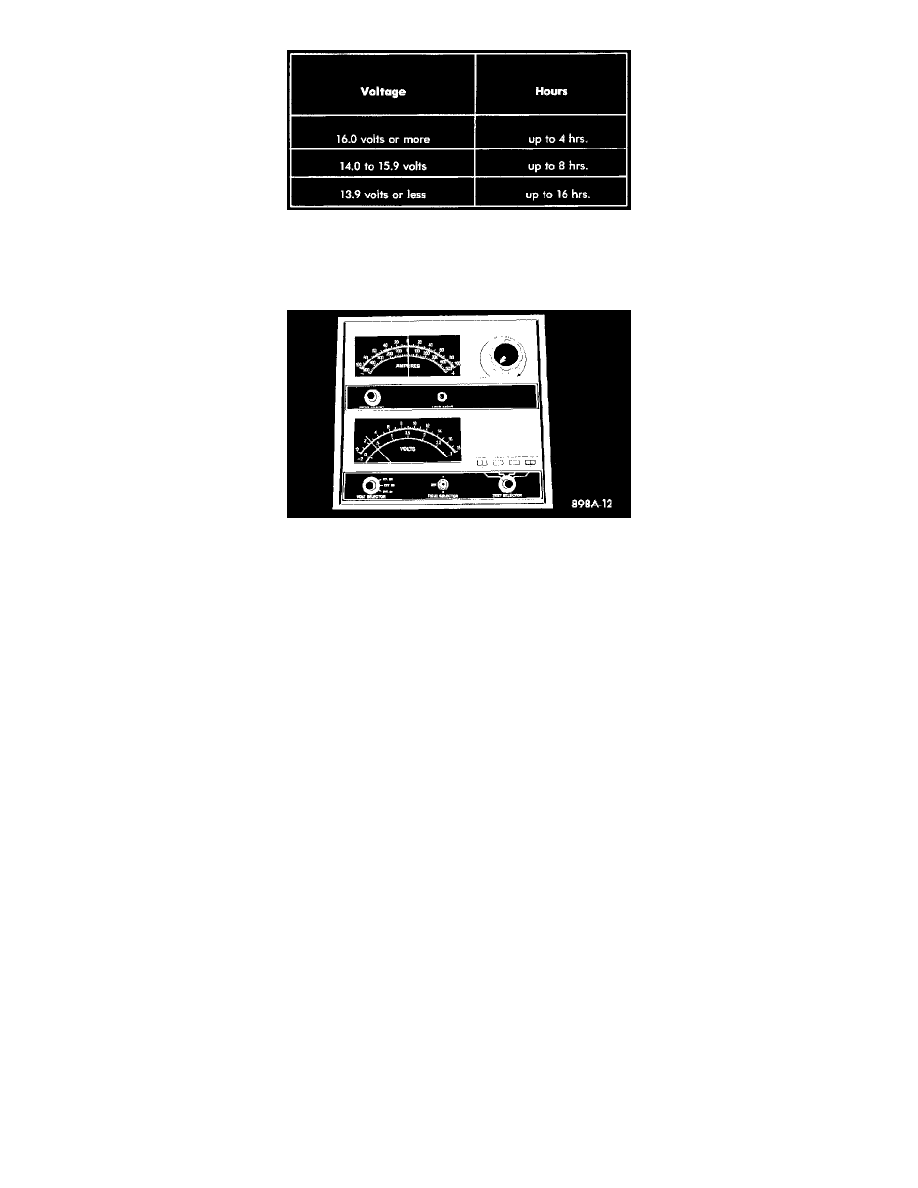Grand Voyager L4-2.4L DOHC (1996)

Charging Rate
The following procedure should be used to recharge a completely discharged battery. Unless procedure is properly followed, a good battery may be
needlessly replaced.
Voltmeter Accurate to 1/10 Volt Connected - Typical
1. Measure the voltage at battery posts with a voltmeter accurate to 1/10 Volt. If below 10 Volts, charge current will be low, and it could take some
time before it accepts a current in excess of a few milliamperes. Such low current may not be detectable on amp meters built into many chargers.
2. Connect charger leads. Some chargers feature polarity protection circuitry that prevents operation unless charger is connected to battery posts
correctly. A completely discharged battery may not have enough voltage to activate this circuitry. This may happen even though the leads are
connected properly.
3. Battery chargers vary in the amount of voltage and current they provide. For the time required for the battery to accept measurable charger current
at various voltages. If charge current is still not measurable after charging times, the battery should be replaced. If charge current is measurable
during charging time, the battery may be good, and charging should be completed in the normal manner.
NOTE: On some models you will need to perform the LED reset procedure after charging or replacing the battery. See: LEDs Flashing - A/C
Calibration/Diagnostics and Cooldown Test
Battery Replacement
WARNING: TO PROTECT THE HANDS FROM BATTERY ACID, A SUITABLE PAIR OF HEAVY DUTY RUBBER GLOVES, NOT
THE HOUSEHOLD TYPE, SHOULD BE WORN WHEN REMOVING OR SERVICING A BATTERY. SAFETY GLASSES ALSO SHOULD
BE WORN.
REMOVAL
1. Verify that the ignition switch and all accessories are OFF
